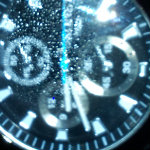Q
Is HiLux a good family car?
Whether the HiLux is a suitable family vehicle depends on your family's specific needs and priorities. On the positive side, it has several notable advantages. First, the HiLux is known for its exceptional durability and reliability, which is widely recognized in the market. It can handle rough road conditions and long-distance travel, alleviating concerns about breakdowns during family trips. Additionally, it offers a variety of body styles, including a double cab version that can comfortably seat five people, providing ample space for small families. Moreover, many HiLux models come equipped with a range of safety features, such as multiple airbags, anti-lock braking system (ABS), and stability control, all designed to help keep your family safe on the road.
However, there are some potential drawbacks to consider. Due to its pickup truck structure and stiffer suspension, ride comfort may not match that of dedicated family sedans or SUVs, particularly on long journeys or uneven surfaces, which could result in discomfort for passengers. Furthermore, the fuel consumption of the diesel variant may be higher compared to some family cars, which can increase the costs of daily use and long trips.
In conclusion, if your family enjoys outdoor activities such as camping, fishing, or off-road adventures and needs a vehicle capable of carrying heavy loads and navigating challenging terrains, the HiLux could be an excellent choice. However, if you prioritize a comfortable and quiet driving experience along with fuel efficiency for daily commutes and city driving, you may want to explore other options.
Special Disclaimer: This content is published by users and does not represent the views or position of PCauto.
Related Q&A
Q
What is the difference between 2.8 L and 3.0 L Hilux?
In Malaysia, there is no 3.0-liter variant of the Toyota Hilux; instead, the models available feature a 2.8-liter engine, such as the 2023 Hilux Double Cab 2.8 Rogue AT 4WD and the 2023 Toyota Hilux GR Sport 2.8 AT. Taking these two 2.8-liter variants as examples, they offer more powerful performance compared to the 2.4-liter models, with the 2.8-liter engine delivering a maximum power of 204 PS, while the 2.4-liter engine reaches a maximum power of 150 PS. Additionally, the 2.8-liter models provide a maximum torque of 500 N·m, compared to 400 N·m for the 2.4-liter variants.
In terms of features, some versions of the 2.8-liter models come equipped with more advanced active safety technologies, such as lane-keeping assist, lane departure warning systems, active braking/safety systems, and forward collision warning—some of which are not available on select 2.4-liter models. Furthermore, the 2.8-liter variants also offer enhanced comfort features, such as 8-way power-adjustable front seats and upgraded air conditioning systems in certain versions.
When it comes to pricing, the 2.8-liter models are priced higher, with the 2023 Hilux Double Cab 2.8 Rogue AT 4WD retailing for RM 158,880 and the 2023 Toyota Hilux GR Sport 2.8 AT costing RM 169,080, both of which exceed the prices of their 2.4-liter counterparts.
Q
Which is better, Hilux or D-Max?
Both the Toyota Hilux and Isuzu D-Max have their unique advantages, making it challenging to simply declare one as better than the other. The Hilux, a model under the Toyota brand, is renowned for its reliability and durability, with many owners reporting that its mechanical structure is stable enough to handle various complex and harsh road conditions. Its extensive maintenance network makes post-purchase upkeep convenient; in remote areas, finding parts and repair services is relatively easy. The price range for the Hilux varies from RM 89,100 to RM 169,080, with multiple powertrain configurations available.
On the other hand, the Isuzu D-Max shines in terms of ride comfort and interior quality. Its interior design places a strong emphasis on ergonomics, offering comfortable seating and a smooth driving experience. If you frequently navigate challenging terrains and prioritize the vehicle's durability and stability, the Hilux is an excellent choice. However, if you place a higher value on driving comfort and interior quality, the D-Max may be more suitable for your needs.
Q
What is the best engine of Hilux ?
The Toyota Hilux offers various engine options, each with its own characteristics, so the “best” choice ultimately depends on individual needs. The 2.4-liter diesel engine, such as that found in the 2023 Toyota Hilux Single Cab 2.4 MT 4WD, has a displacement of 2393 mL, delivering a maximum power of 150 PS, 110.3 kW, and a peak torque of 400 N·m. This variant is an excellent choice for users who prioritize fuel efficiency and everyday practicality, as it adequately meets the demands of daily commuting and general cargo transport on regular road conditions. Moreover, it is relatively affordable, with the Single Cab model priced at RM 103,880.
In contrast, the 2.8-liter turbocharged diesel engine provides a more robust performance, as seen in the 2023 Hilux Double Cab 2.8 Rogue AT 4WD. This engine boasts a displacement of 2755 mL, generating a maximum power of 204 PS, 150 kW, and a peak torque of 500 N·m. It handles complex terrains and heavy load requirements with ease, proving powerful strength in off-road situations or when towing heavy loads. Additionally, high-end versions equipped with this engine often come with more advanced features and luxurious interiors, but at a higher price point, such as the 2023 Toyota Hilux GR Sport 2.8 AT, which retails for RM 169,080.
If you frequently encounter challenging road conditions, have heavy loading needs, or seek a more powerful driving experience, the Hilux with the 2.8-liter engine would be a better choice. However, for those who primarily use the vehicle for everyday purposes, the 2.4-liter engine is more than sufficient and offers better value for money.
Q
What is the fuel range of a Toyota Hilux?
The range of the Toyota Hilux depends on several factors, including the specific model, driving conditions, and driving style. Generally, the Hilux has a fuel tank capacity of 80 liters. For instance, the official combined fuel consumption of the 2023 Hilux Double Cab 2.8 Rogue AT 4WD is 10.2 liters per 100 kilometers. Based on this fuel consumption and the 80-liter tank, the estimated range can be calculated as follows: 80 liters divided by 10.2 liters per 100 kilometers, which equals approximately 784 kilometers.
As another example, the official combined fuel consumption for the 2023 Toyota Hilux GR Sport 2.8 AT is 8.5 liters per 100 kilometers. Using the 80-liter tank, the range is roughly 80 divided by 8.5, resulting in approximately 941 kilometers. It is important to note that these are only estimates, and actual range may vary due to factors such as terrain, traffic conditions, and vehicle load.
Q
How many cylinders does a 3.0 Hilux have?
The commonly found 3.0-liter diesel version of the Toyota Hilux in the Malaysian market (model 1GD-FTV) features a 4-cylinder inline engine. Despite its larger displacement, Toyota has optimized the turbocharging (D-4D technology) and fuel injection system to ensure a balance between power output and fuel efficiency, delivering up to 204 horsepower and 500 Nm of torque. This engine is quite popular locally, particularly for commercial and off-road applications that require high load capacity or long-distance driving. Its durability and low maintenance costs are also key reasons why Malaysian consumers choose the Hilux.
It's important to note that, although it has a displacement of 3.0 liters, the four-cylinder design is lighter and more fuel-efficient compared to the older V6 engine, while also meeting modern emissions standards. For those seeking stronger performance, the Hilux's 2.8-liter version (also a 4-cylinder) is worth considering, as it has slightly different tuning but remains equally reliable. It is recommended to take a test drive to experience the low-end torque performance and consult with a dealer regarding regular maintenance to keep the engine in optimal condition.
Q
How much weight can the Toyota Hilux carry in its cargo bed?
The load capacity of the Toyota Hilux cargo bed can vary depending on the specific model, production year, and configuration. For instance, the Toyota Hilux Champ has a load capacity of 1,000 kilograms. Similarly, the standard Toyota Hilux sold in Malaysia is officially rated for the same 1,000-kilogram capacity.
It's important to note that exceeding the recommended load capacity can negatively impact the vehicle's handling, braking performance, and overall safety, as well as cause premature wear on components such as the suspension, tires, and brakes. Be sure to consult the vehicle's user manual or speak with a Toyota dealer to obtain the most accurate load capacity information for your specific vehicle.
Q
What is the fuel tank capacity of Hilux?
The Hilux features a fuel tank capacity of 80 liters. This relatively large tank allows for an extended range between refueling, benefiting all types of driving—whether it's for work purposes, such as reaching remote job sites, or for long road trips. With this 80-liter capacity, drivers enjoy greater flexibility and reduced frequency of visits to the gas station. It also instills confidence in drivers to travel longer distances without the constant worry of running out of fuel.
All models in the Hilux lineup come with this same fuel tank capacity, regardless of the specific configuration or engine option you choose.
Q
How many plugs does Hilux have?
In common models of the Toyota Hilux, such as the current 3.0L or 2.8L diesel versions, standard equipment typically includes one to two 12V power outlets (cigarette lighter sockets), with the exact number depending on the trim level. For instance, the base model may feature just one outlet located beneath the dashboard, while higher-spec versions, like the Hilux GR Sport, may add a second 12V outlet in the central console or rear seating area, facilitating the connection of in-car chargers, coolers, and other devices.
It’s worth noting that the latest generation of the Hilux has gradually introduced USB charging ports (Type A or Type C) to meet the power needs of modern electronic devices. However, traditional 12V outlets remain a vital feature for expanding equipment in commercial or outdoor settings, such as onboard air pumps and lighting systems. For those requiring additional power support, owners can consider aftermarket adapters or inverters (with due caution regarding circuit load safety), and it’s advisable to consult an authorized Toyota modification center to ensure compatibility.
Q
Is the Toyota Hilux powered by petrol or diesel?
The Toyota Hilux sold in Malaysia is powered by diesel. This fuel type offers several advantages that suit the Hilux's capabilities. Diesel engines generally provide higher torque at lower RPMs, which is beneficial for a vehicle like the Hilux, often used for tasks such as towing and off-road driving.
With diesel, the Hilux can handle heavy loads and challenging terrains more effectively. It also typically has better fuel efficiency compared to petrol engines in certain driving conditions, making it a practical choice for those who cover long distances or use the vehicle for work purposes. Moreover, diesel fuel is more readily available across Malaysia, ensuring convenient refueling for Hilux owners. This makes the diesel-powered Hilux a reliable and efficient option for Malaysian consumers who require a robust and versatile vehicle.
Q
What is the maintenance cost of Toyota Hilux?
The maintenance costs of the Toyota Hilux in Malaysia vary based on the model, usage, and service intervals, but overall, it falls within the affordable range. For common 2.4L or 2.8L diesel variants, routine maintenance is typically performed every 10,000 kilometers or 6 months (whichever comes first), with costs ranging from RM350 to RM600. This includes basic replacement items such as engine oil and filters.
For major service intervals, such as every 40,000 kilometers or every 2 years, which involve additional items like transmission fluid and brake fluid, costs can be around RM1,000 to RM1,500, depending on the specific inspection items involved. The Hilux’s durability and the lower dependency on imported parts (with some components produced locally) help keep long-term maintenance expenses manageable. However, maintenance related to key components such as the turbocharger or four-wheel drive system may incur slightly higher costs.
It is advisable to have regular maintenance performed at authorized Toyota service centers to ensure the validity of the factory warranty. Owners can also refer to Toyota Malaysia’s “Scheduled Service Guide” for more precise cost estimates. Additionally, performing simple tasks like replacing the air filter on your own can slightly reduce long-term expenses, but be sure to ensure that it does not affect the warranty terms.
Latest Q&A
Q
How much is a Haval H2 2019?
The price of the 2019 Haval H2 in the used car market in Malaysia is approximately between RM40,000 and RM60,000. The specific price depends on factors such as the vehicle's condition, mileage, configuration, and region. As a compact SUV from a Chinese brand, the Haval H2 has attracted many consumers in the local market with its high cost - effectiveness and practical configurations. It is usually equipped with a 1.5 - liter turbocharged engine, which offers good power performance. Meanwhile, the interior design is more youthful, and the space is sufficient for daily family use.
If you're considering buying a used Haval H2, it is recommended to have a professional technician check the vehicle's condition and compare the quotes from different sellers. You can also learn about the used - car market situation of other models in the same class, such as the Baojun 510 or the Honda HR - V, to make a more comprehensive decision.
The maintenance cost of the Haval H2 is relatively reasonable, but some parts may need to be imported from China, and the waiting time may be a bit long. Therefore, it's best to check whether the nearby maintenance centers support the after - sales service for this model before making a purchase.
Q
Is the 2023 Dodge Charger GT fast?
The 2023 Dodge Charger GT performs well in terms of performance. It is equipped with a 3.6-liter V6 naturally aspirated engine, with a maximum output power of 300 horsepower and a peak torque of 264 lb-ft. Paired with an 8-speed automatic transmission, it can accelerate from 0 to 100 km/h in about 6 seconds. This is quite fast for a mid - to large - sized sedan, especially suitable for the urban roads and highway driving needs in Malaysia. Although it's not the fastest model in the Charger series (for example, the Hellcat version has stronger performance), the GT version strikes a good balance between power and fuel economy. Meanwhile, it also offers rear - wheel drive or all - wheel drive options to meet different driving preferences. If you're after stronger performance, you can consider the Charger R/T or Scat Pack versions. They are equipped with V8 engines, providing more power but also consuming more fuel. Given the hot climate in Malaysia, it is recommended to regularly maintain the engine and cooling system to ensure the vehicle stays in good condition in the long run.
Q
How much horsepower does a 2023 Challenger GT have?
The 2023 Dodge Challenger GT is powered by a 3.6-liter Pentastar V6 naturally aspirated engine, with a maximum horsepower of 303 hp and a peak torque of 358 Nm. It's paired with an 8-speed automatic transmission and comes with rear-wheel drive or an optional all-wheel drive system. This model is a relatively niche but performance - stable American muscle car in the Malaysian market, suitable for car owners who love a unique style.
It's worth mentioning that although the Challenger GT is positioned lower than the higher - performance R/T or Hellcat versions, its V6 engine offers a more balanced performance in terms of fuel economy and daily driving comfort, while still retaining the classic American muscle car exterior design.
For Malaysian consumers, the after - sales maintenance of this car may need to be carried out through import car franchises, and the parts supply cycle is relatively long. However, its overall reliability is quite good among similar models. If you have higher performance requirements, you can also consider other high - performance versions of the Dodge Challenger series, but the price and maintenance costs will increase significantly.
Q
How fast is the 2023 Dodge Challenger GT?
The 2023 Dodge Challenger GT is a rear-wheel-drive/all-wheel-drive muscle car that combines performance and practicality. Its 3.6-liter Pentastar V6 naturally aspirated engine can produce 303 horsepower and 268 lb-ft of torque. Paired with an 8-speed automatic transmission, it can accelerate from 0 to 100 km/h in about 6 seconds, and its top speed is electronically limited to around 250 km/h.
This car is quite rare in the Malaysian market. However, its all-weather all-wheel-drive system (optional) is especially suitable for the local rainy climate. It's easier to handle on wet roads than the standard rear-wheel-drive version. It's worth noting that although the Challenger GT isn't as powerful as high-performance versions like the Hellcat, the V6 engine offers better fuel economy for daily use. It consumes about 12 - 13 liters per 100 km in the city and can drop to 8 - 9 liters on the highway.
The characteristics of Dodge muscle cars, such as the retro exterior design, wide-body (in some versions), and customization options (like 20-inch wheels/performance exhaust) are all retained, and the maintenance cost is relatively lower compared to the V8 versions. If you're considering importing it, you also need to pay attention to Malaysia's AP import permit and the up-to-105% displacement tax (for engines above 3.0L), which may make the on-road price significantly higher than that in the US market.
In the same class, you can refer to the Ford Mustang EcoBoost (2.3T) or the Toyota Supra 2.0T. However, the Challenger GT's all-wheel-drive system and its American muscle car DNA remain unique selling points.
Q
How many cylinders does a 2023 Dodge Challenger GT have?
The 2023 Dodge Challenger GT is powered by a 3.6-liter Pentastar V6 naturally aspirated engine. It's a 6-cylinder engine with a V-shaped layout. The maximum power can reach 305 horsepower, and the peak torque is 365 N·m. It's paired with an 8-speed automatic transmission and offers rear-wheel drive or all-wheel drive options. This engine is well - known for its smoothness and reliability, making it suitable for daily driving and mild performance needs. Also, its fuel economy is more friendly compared to the V8 version.
For Malaysian consumers, the V6 engine of the Challenger GT strikes a good balance between power and fuel consumption. Coupled with its classic muscle car appearance, it's a choice that combines individuality and practicality. It's worth mentioning that the Dodge Challenger series also has higher - performance V8 versions like the R/T, Scat Pack, and Hellcat, which are equipped with 5.7 - liter, 6.4 - liter, and 6.2 - liter supercharged V8 engines respectively to meet the needs of different performance enthusiasts. However, the GT version is more suitable for the road conditions and fuel price environment in Malaysia.
View MoreRelated News

2026 Toyota Hilux Interior Unveiled, and It’s Giving Prado Vibes
JohnAug 6, 2025

All-New 2025 Toyota Hilux Coming Soon: Here's What to Expect
JamesJun 24, 2025

Toyota Hilux: A Buying Guide to Help You Choose the Right Model
MichaelMar 25, 2025

Reasons Why Pickups and SUVs Are Not Suitable for Electric Drive, Industry Secrets You Must Know Before Buying
JamesFeb 14, 2025

2023 Toyota Hilux GR Sport: Priced at RM 169,080
LienJul 4, 2024
View More















Pros
Cons